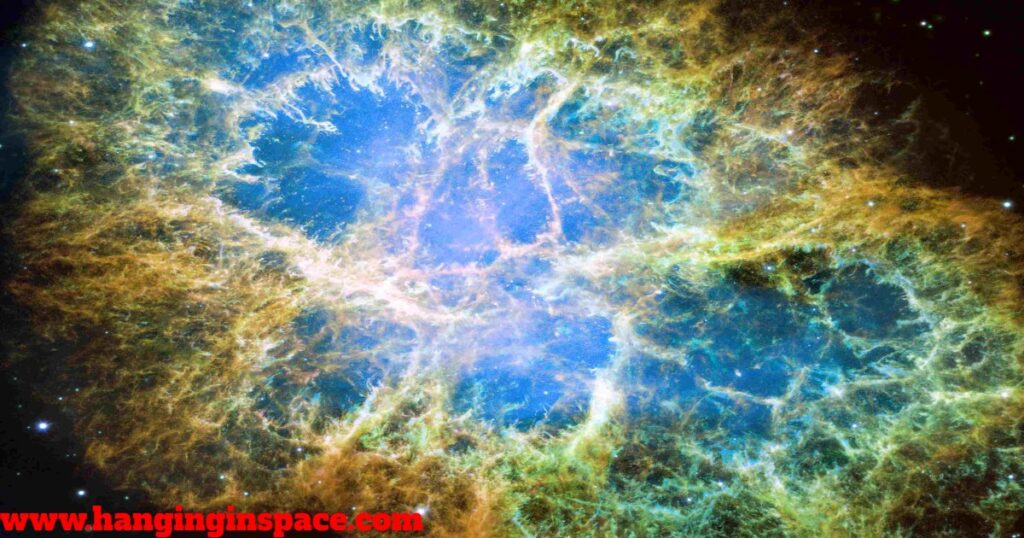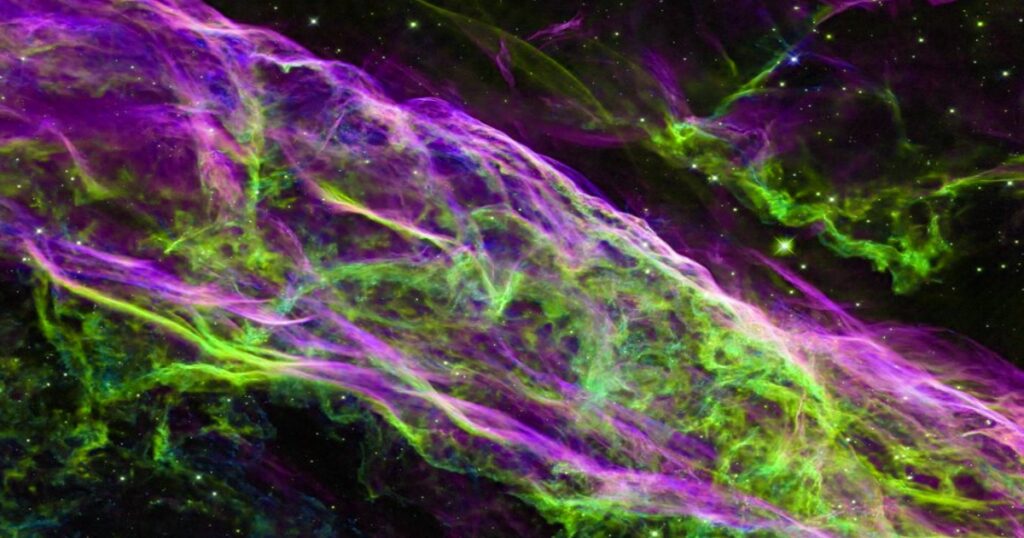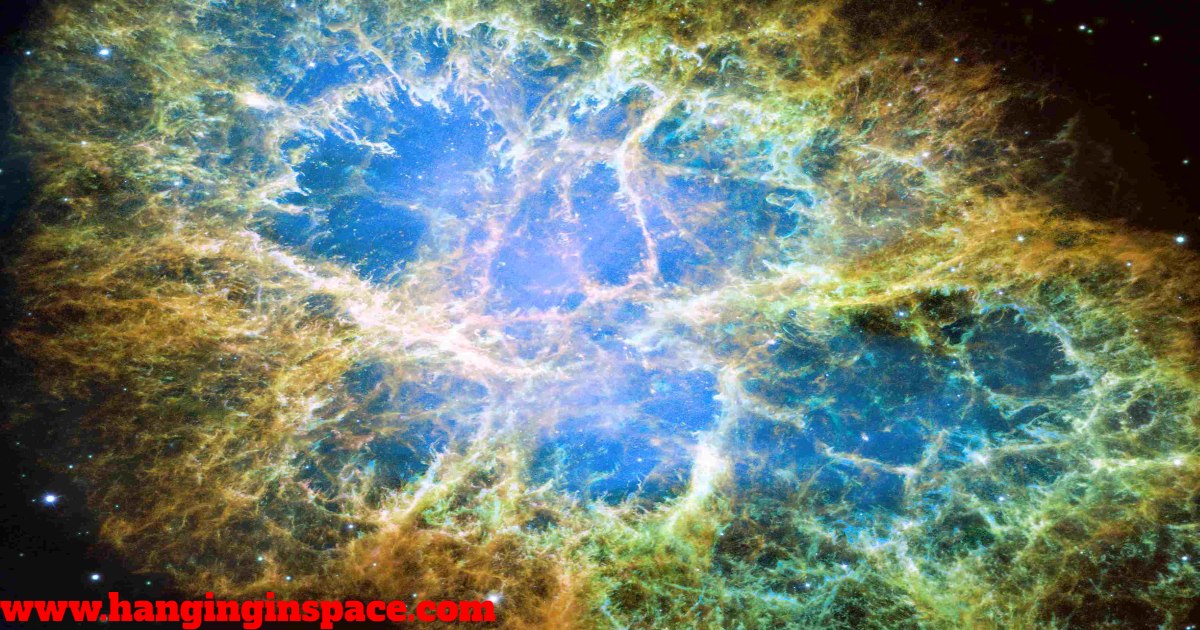Nebulae are stellar clouds made of gas and dust that are dispersed across the universe. These bright webs of interstellar material are the chambers of cosmic development, the birthplaces of planets, and the sites of star formation.

What is the Composition of Nebulae?
Nebulae are primarily composed of hydrogen gas, with some helium and traces of heavier elements like oxygen, carbon, and nitrogen. Dust particles, made up of ice and rocky material, are also present.
Where are Nebulae Found?
Nebulae are found throughout the interstellar medium, the vast space between stars in galaxies.
What is the Size of Nebulae?
Nebulae can range in size from a few light-years to hundreds of light-years across. A light-year is the distance light travels in one year, which is a staggering 9.5 trillion kilometers.
What is the Origins of Nebulae?
Nebulae arise from the remnants of stellar explosions, the gravitational collapse of interstellar gas clouds, and the outflows of dying stars. These clouds of gas and dust contain the raw materials necessary for the formation of new stars and planetary systems, making them fertile grounds for cosmic creativity and transformation.

What are the Characteristics of Nebulae?
Nebulae come in a variety of shapes, sizes, and colors, depending on their composition, density, and illumination. They can be classified into several types, including emission nebulae, reflection nebulae, and dark nebulae, each with its own unique appearance and properties.
Emission nebulae glow brightly due to the ionization of hydrogen gas by nearby stars, while reflection nebulae reflect the light of neighboring stars off their dust grains, creating stunning blue hues. Dark nebulae are dense clouds of gas and dust that obscure the light of stars behind them, appearing as dark patches against the background of stars.
What is the Significance of Nebulae?
Nebulae play a crucial role in the cosmic cycle of star formation and evolution. They serve as the birthplaces of stars, where gravity and radiation sculpt the gas and dust into new stellar systems. As stars form within nebulae, they heat up the surrounding gas, causing it to glow brightly and illuminate the surrounding clouds.
Nebulae also act as cosmic laboratories, where astronomers can study the processes of star formation, the chemical composition of the universe, and the dynamics of interstellar matter.

What are the Types of Nebulae?
There are three main types of Nebulae:
Emission Nebulae:
These vibrant nebulae are glowing clouds of gas, primarily hydrogen, that have been energized by the radiation from nearby hot young stars. The energetic starlight excites the gas atoms, causing them to emit light of specific colors, often dominated by red hues due to the emission lines of hydrogen.
Emission nebulae are the active stellar nurseries where new stars are currently being born. Examples include the Orion Nebula, a spectacular nebula teeming with young stars, and the Lagoon Nebula, a colorful star-forming region.
Reflection Nebulae:
Unlike emission nebulae, reflection nebulae don’t generate their own light. Instead, they reflect and scatter the light from nearby stars, appearing as wispy, blue-hued clouds. The dust particles within these nebulae are responsible for scattering the starlight, creating the characteristic blue color.
Reflection nebulae often reside near hot young stars and can trace the outlines of cavities carved by stellar winds. An example is the NGC 1977 nebula, a delicate blue reflection nebula illuminated by the star Alnitak in the Orion constellation.
Dark Nebulae:
These dense clouds of dust and gas appear as dark, obscuring patches against the backdrop of the glowing interstellar medium. Dark nebulae are the densest and coldest regions of space, where gravity can overcome the outward pressure of the gas, triggering the collapse that leads to star formation.
The Horsehead Nebula, a dark nebula shaped like a horse’s head silhouetted against an emission nebula, and the Coal Sack Nebula, a prominent dark nebula in the Southern Hemisphere, are famous examples.
What are the Examples of Nebulae?
Among the myriad nebulae scattered throughout the cosmos, several stand out for their beauty and scientific significance. NGC 262 Nebula is the largest nebula ever discovered with a size of 1 million light-years wide, it is the leftover material from smaller galaxies merging with the central spiral NGC 262 galaxy in the constellation Andromeda.
The Orion Nebula (Messier 42), located in the constellation Orion, is one of the most famous examples, with its colorful clouds of gas and dust illuminated by the light of nearby stars. The Eagle Nebula (Messier 16), also known as the “Pillars of Creation,” is another iconic nebula, famous for its towering columns of gas and dust.
These and other nebulae continue to inspire astronomers and stargazers alike with their breathtaking beauty and profound insights into the nature of the universe.
Read also: 30 Most Famous Nebulae in the Universe
Difference between Nebulae and Planetary Nebulae:
Nebulae Vs. Planetary Nebulae
| Feature | Nebulae | Planetary Nebulae |
|---|---|---|
| Type | Interstellar clouds of gas and dust | Formed from the cast-off shells of dying stars |
| Origin | Varied – Can be stellar nurseries where new stars are born (emission nebulae), remnants of exploded stars (supernova remnants), or vast clouds of gas and dust leftover from the formation of the galaxy (reflection nebulae) | Formed when a Sun-like star reaches the end of its main sequence life and expels its outer layers |
| Size | Vast and varied, ranging from a few light-years to hundreds of light-years across | Smaller; typically less than a light-year in diameter |
| Stars | May or may not contain young stars within them | Do not contain new star formation; the central star is a hot white dwarf |
| Light | Emission nebulae emit their own light due to energetic radiation from young stars; reflection nebulae reflect light from nearby stars | Emit light due to the hot, central white dwarf star ionizing the surrounding gas |
| Color | Varied depending on composition and exciting star; often red (due to hydrogen emission) or blue (due to scattered starlight) | Often faint blue or green due to the dominant emission lines from ionized oxygen |
Conclusion:
In conclusion, nebulae are celestial wonders that hold the keys to understanding the mysteries of the cosmos. From their humble beginnings as clouds of gas and dust to their spectacular transformations into luminous tapestries of interstellar matter, nebulae embody the creative forces that shape the universe.
